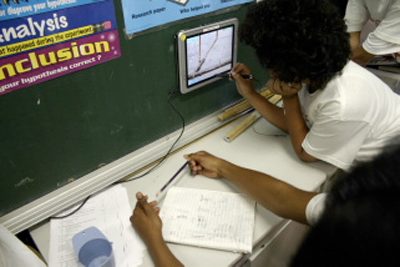Embodying Scientific Concepts in the Physical Space of the Classroom
July 11th, 2008
Categories: Applications, Education, Software, VR

Authors
Malcolm, P., Moher, T., Bhatt, D., Uphoff, B., Lopez-Silva, B.About
Several simulation environments exist that create a place in which students can explore scientific phenomena. In this paper, we propose design guidelines for creating a classroom environment that puts scientific concepts directly into that physical space. We examine the results of two implementations of WallCology, which we characterize as an embedded phenomenon, in elementary and middle school classrooms. Several instances of innovative student inquiry emerged as a result of the design features. Along with the results of learning, we look at the relationship between an embodied approach to design and the imaginative role of the student.
Keywords: Information interfaces and presentations (e.g., HCI), Group and Organization Interfaces, Computers and Education
Resources
URL
Citation
Malcolm, P., Moher, T., Bhatt, D., Uphoff, B., Lopez-Silva, B., Embodying Scientific Concepts in the Physical Space of the Classroom, Proceedings of the 7th International Conference on Interaction Design and Children, Chicago, IL; ISBN:978-1-59593-994-4, ACM New York, NY, USA, pp. 234-241, July 11th, 2008. http://portal.acm.org/citation.cfm?id=1463761